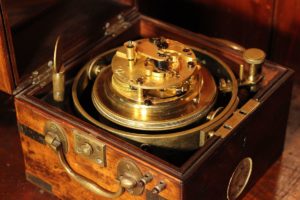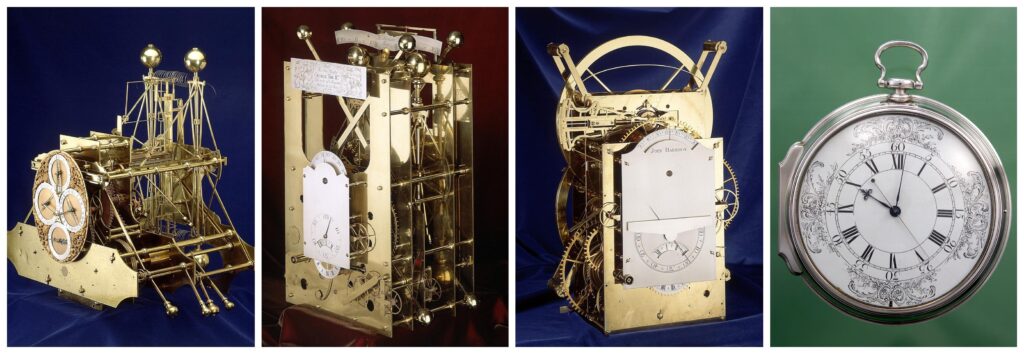
Amazing that it may seem to people living in the 21st century, finding reliable longitudinal position at sea was not possible until 1730 when John Harrison invented the marine chronometer, a timepiece c
Maritime travel and trade was rapidly expanding in the time leading up to the 18th century. The discovery of the North and South American continents by European explorers resulted in transoceanic voyages being made for the first time. This meant a majority of time spent at sea spent out of sight of any landmass, making it trickier to accurately navigate the voyage.
The principle unresolved problem in these transoceanic voyages was finding reliable a longitudinal position while at sea. This was not possible until 1730 when John Harrison invented the marine chronometer, a timepiece capable of keeping accurate time of a known, fixed location.
The Longitude Problem
To determine a location one needs to know both the latitude and longitude of the location. Latitude could easily be measured by using the sun or the stars. Longitude was more difficult in that it could be calculated by comparing two accurate times – one of a known longitude (a Prime Meridian) and the other at any other location. A little math works out the rest. The Earth makes one full rotation per day (360º of longitude) and therefore turns one degree of longitude in 1/360th of a day, or every four minutes. Work out the time distance from your location to the Prime Meridian, and you know your degree of longitude from the Prime Meridian.
Therefore the trick to determining longitude at sea then required an accurate timekeeping device that had to work on a ship. However the only known accurate timekeeping devices of the time used a pendulum, which swayed as the boat rocked at sea.
Early methods of measuring longitude proved to be inaccurate, sometimes with deadly consequences. The most common technique was called dead reckoning. Beginning with a know starting location, the longitude was simply estimated by the captain based on a number of factors such as current and wind speed, direction of travel, and other factors. The result was at best a close approximation with compounding errors decreasing the accuracy over time and distance.
A series of naval disasters, most notably a 1707 wreck of four British war ships that saw a loss of over 1500 lives, prompted the British government into action. The Longitude Act of 1714 provided an incentive to solve this problem by offering a longitude prize ranging from £10,000 to £20,000 to anyone who could provide a simple and practical method to accurately determine a ship’s longitude at sea within one half of a degree. Four years later the Academie de Paris offered a similar prize. The race was on to solve the problem.
John Harrison and the Marine Chronometer
Born in Yorkshire and a carpenter by profession, John Harrison invented a mechanized timekeeping machine that solved this problem which he called a chronometer. This device was, in a sense, the worlds first global positioning device. In 1730 he began working on his first prototype which he called H1. The project took him over five years to complete and he presented his device to the Board of Longitude in 1736. He was granted a sea trial – the first given by the board – and the device performed well. He was award small grant for further development and Harrison set to work on his H2 device.

Over several years Harrison further refined his sea clock in the form of his H2 and H3 devices, but came to realize the device was fundamentally flawed. He shifted gears and went from making a sea clock to a sea watch. He realized that some watches would keep time as accurate as his larger sea clocks and were much more practical for sailing. This lead to his most famous device the H4, which kept nearly perfect time, was around five inches in diameter.
Harrison’s H4 watch essentially was a large pocket watch that was wound daily. It possessed a 30-hour power supply. The main technological breakthrough of all his devices was a spring driven mechanism that replaced the pendulum. The smaller watch allowed for a higher frequency of the balance, making it more accurate than his clocks. Various combinations of metals were used in the watch to overcome the deleterious effects of humidity and temperature change. The watch took six years to construct, was completed in 1759 and tested in 1761. The watch passed the test with remarkable accuracy. It lost a mere five seconds on an 81 day voyage to the West Indies and back. After some wrangling Harrison was able to receive his prize from the British government for the design.
Continue reading more about the exciting history of science!